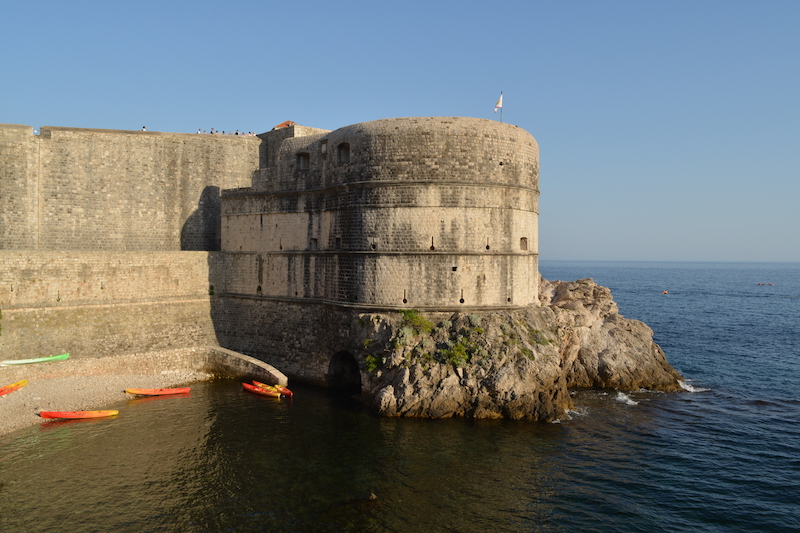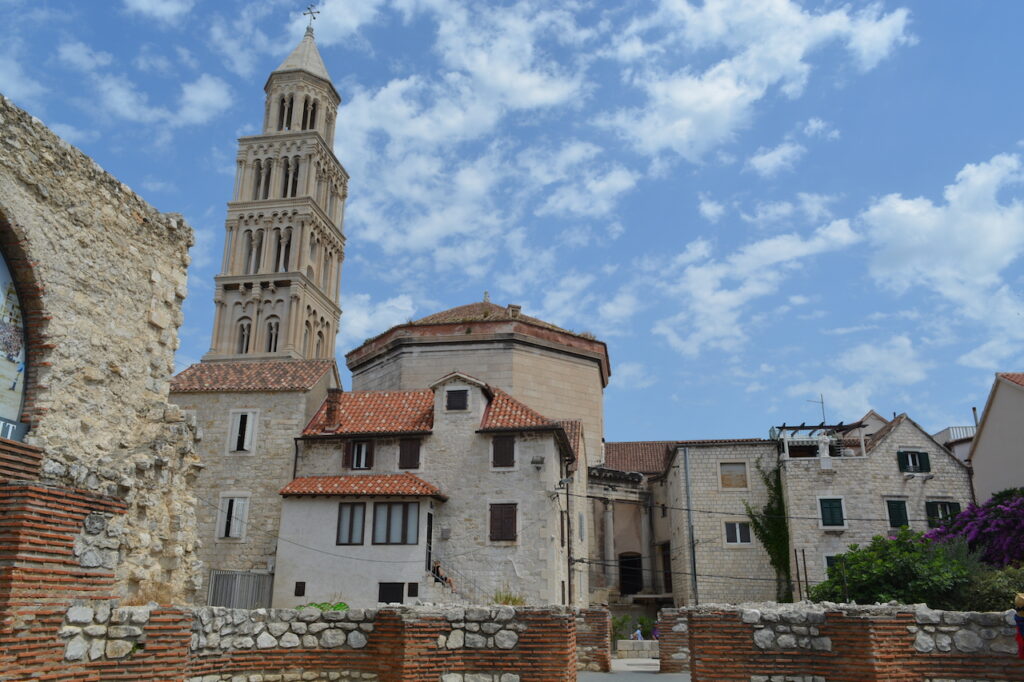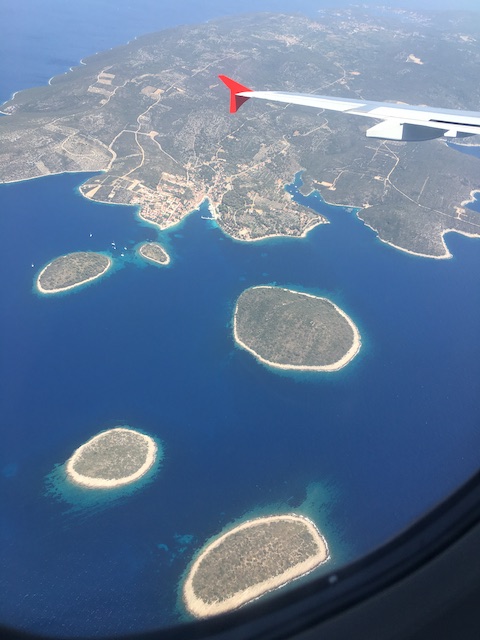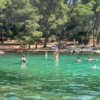Croatia is beautiful! Under a super blue sky in summer time, Croatia offers us stunning nature’s beauty, well-preserved old towns(UNESCO) , tasty seafood and nice hospitality from friendly local people. Although detailed history not really my cup of tea, there are few things I found interesting, together with some basic infos which I want to blog it for a record and share with you!

Our 6 days trip itinerary in Croatia
Home → Split Airport → Trogir → Split (3 nights) → Hvar (1 night) → Dubrovnik (1 night) → Home
We wanted to base in Split and do some day trips like Krka National Park. Unfortunately we couldn’t make it because something happened unexpectedly (keep reading, you’ll find out soon…)
Moving around in Croatia without car
For the transportation, we travelled by ferry from Split to Hvar(1 hr) and then to Dubrovnik(3 hrs). I recommend to purchase ticket directly on the ferry’s official website, such as KL or Jadrolinija, which is cheaper than buy it through online agency like “bookaway” or “getbyferry”, but you don’t have ticket free cancellation.
When you book the ferry ticket, you may notice it mentions the ferry is a Catamaran. What exactly is a Catamaran? It is a type of boat or ship, which looks like it has “two legs”(double hulled), deriving greater stability while sailing. From my experience, the ferry was very stable and I didn’t need to take any sea motion sickness pills.
So, how about short distance travelling?

For example, from airport/ferry port to city centre, you can use the local bus. So you’ll need some cash be ready on hand. You can buy ticket on bus, but it’s a little bit cheaper when buying from ticket counter or kiosk. And of course, taxi always is an option, there are a lot of taxis around!
Apartment rental recommendation in Split
For the accommodation, we rent an apartment in Split and Hvar, and a B&B in Dubrovnik. In which particularly I want to recommend Teja apartment in Split. Not only It has an unbeatable sea view, the host also offered mineral water, candies, tea and coffee, maps, board games……it’s even better than a hotel!


And in Dubrovnik, B&B Villa Dubrovnik Garden is a good option. We especially liked the breakfast setting in a beautiful garden, offering a wide range of food including bread, pastry, ham, cheese, yogurt, fruits and drinks.


1. Croatia: 3 UNESCO sites in 4 Places



Among these 4 places we went, not only Trogir the whole town itself, Historical Complex of Split with the Palace of Diocletian, and the Old City of Dubrovnik are also UNESCO World Heritage site. While exploring those narrow alleys in the old city, you can see a lots of rocks built houses and architectures without any modern touch. We just simply amazed by it, “Wow! People still living there!” Probably no air-con even the whole country was under heat wave attack.
2. Where is Adriatic Sea actually?
While doing research about Croatia, we’ve came across several times of the term “Adriatic Sea”, for example saying the Adriatic offers lots of seafood or the beaches there is beautiful. We only knew Croatia is somewhere in Mediterranean Sea, but had no idea where is Adriatic Sea.


Simply explained, Adriatic sea is a part of Mediterranean sea, where its coast is sharing by Croatia, Italy, Slovenia, Albania, Bosnia and Montenegro. The Adriatic contains more than 1,300 islands, mostly located along the Croatian part of its eastern coast offering turquoise water beaches which attracted 10+ million tourist each year.
3. 98% of Croatia beaches have excellent water

Speaking of Croatia beaches, are there any sandy beach? Actually most of the beaches in Croatia are pebble or rocky beaches. Sandy beach is quite rare. For the water quality? You don’t have to worry! 98% of the beaches(out of 1011 samples) has excellent water quality, you can see from the data provided by the Ministry of Environmental and Nature Protection. However, do bear in mind that sea urchin do exist! My husband just stepped on them and it was quite painful, needed to go to clinic the next day. That’s one of the reasons why we couldn’t make a trip to Krka National Park!
4. Traditional Croatian food? Dalmatian food?
Okay, how about the food?
If you ask any local, “what’s traditional Croatian food?” Probably he couldn’t give you an answer. It’s not like in Japan, everywhere you can find sushi and ramen. In Croatia, it depends where do you located in. For example, along the coastal area, you will find every restaurant is serving seafood and pasta which got influenced from Italy, while in inland area offering more meat, influenced by Hungary and Turkey.
If you go to Trogir, Split, Hvar or Dubrovnik, you’ll see the food is named as Dalmatian food, as these areas are all located in Dalmatia region. Croatia has 4 historical regions, including Istria, Slavonia, Croatia proper and Dalmatia, which located at the south.

Most of the restaurants serve very similar food. Cuttlefish risotto(black risotto), Octopus salad, Sautéed beef pasta, gnocchi, Brodet(fish stew), fish soup, grilled seafood, and yes, many restaurants serve breakfast too. There are almost no Chinese/Indian restaurants.
5. Mediterranean diet also is part of UNESCO
Broadly and generally speaking, Croatia, Italy, Spain, Greece, Cyprus……all those coastal areas are having a Mediterranean diet. And surprisingly, Mediterranean diet is also part of UNESCO Representative List of the Intangible Cultural Heritage of Humanity.
6. What is a Konoba?

When you look for a restaurant, you’ll find many restaurants are named as Konoba xxx. Konoba originally is a room/cellar in a house where food is prepared/cooked or using for wine storage. People and family will gather in a Konoba to share and enjoy food. Eventually a Konoba also derived a meaning of a restaurant where offering traditional and local food. Although nowadays many Konoba also serve pizza which is not part of the Dalmatian cuisine in order to make more profit.
In Dalmatia, Konoba is a big icon. You’ll find less restaurant named Konoba outside of Dalmatia region such as Istria.
7. In Croatia, do you tip in restaurants? And how?
Same as in many other countries, if you are satisfied with the food and service, some tips are always welcomed but not compulsory. However, restaurants cannot take tips by adding it to the credit card, which is kind of by law as we’ve been told by one waiter whom we got excellent service. You can tip by cash, so it’s a good idea to keep some small notes on hand.
Any souvenir to buy in Croatia? (no magnet pls)
During our trip in Croatia, we always found somebody is selling lavender and lace related products, also olive oil along the waterfront or in any other kind of stores.
8. Top Quality Olive oil in Croatia
Compare to Spain and Italy, the olive oil production in Croatia maybe not that much, but they are quite well-known for its excellent quality since many of them got awarded in NYIOOC World Olive Oil Contest. Some say Istria region even produced greater quality of olive oil.
9. Hvar once being called the ‘Lavender Island’

In every corner of a popular tourist attraction, there’ll be at least one stand selling dried lavender products. Lavender grows well in sunny area, survives in little rain condition, which make lavender can grow along the coastline as well as mainland area. And in Hvar, once in its peak time, it has the 8th largest lavender production and being called the “Lavender Island”.
10. Do not miss Lacemaking in Croatia
Do you know, lacemaking in Croatia is a part of UNESCO Representative List of the Intangible Cultural Heritage of Humanity?
There are at least 3 distinct traditions of lacemaking in Croatia, including in Pag, Lepoglava and on Hvar island. Traditionally, aloe lace is made by Benedictine nuns in Hvar. They extract the fibre from fresh aloe/agave leaves and then woven into a net or other pattern on a cardboard background.
If you want to buy something in good quality for souvenir, here is one option. We’ve visited a men’s accessory store called isola in Hvar, where also selling ceramics, dried lavender little cushions and printed lace by-products. If you want to buy a real piece Croatian local made lace, you may also find in this website.
Before I go travel, I mostly do restaurant research only. Curry Boy, on the other hand, like to study about the history. Honestly, I don’t remember history much 😛 , but I do remember the above things I studied after the trip. Anybody like me who used to learn a new place after the trip?


